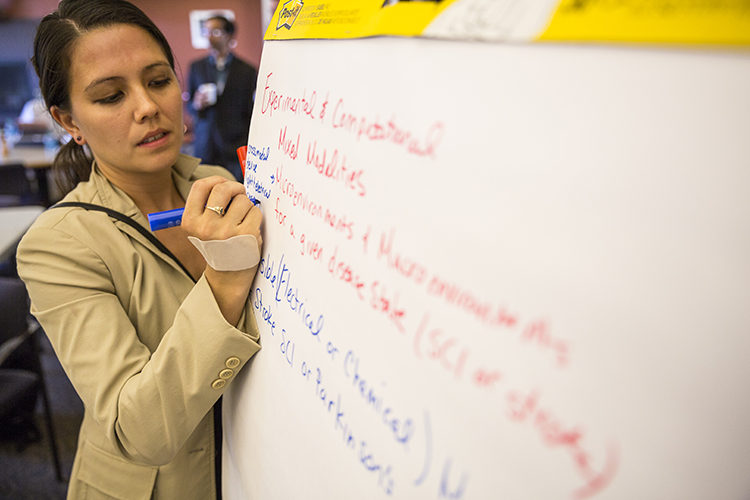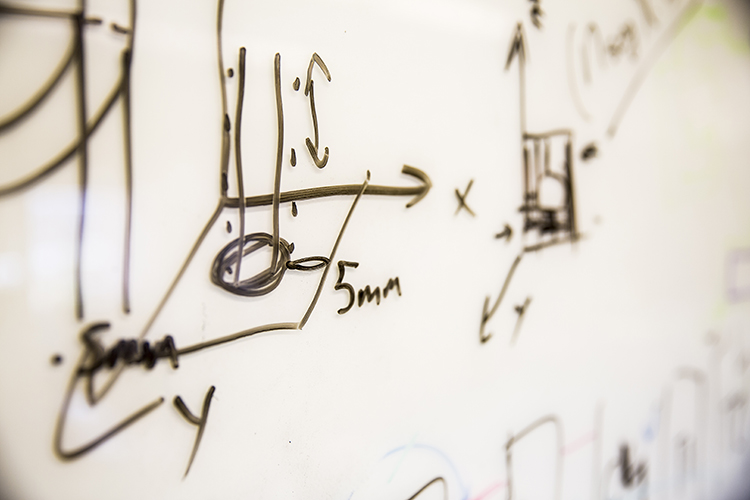Wayne Gillam
Empowering the brain’s ability to change and adapt

Center for Neurotechnology (CNT) researchers at the University of Washington (UW) recently released a publication in PLoS Computational Biology, which describes a new mathematical model useful for engineering bi-directional brain-computer interfaces (BBCIs) that can target and induce brain plasticity (the brain’s ability to change and adapt as a result of experience). This model, described by CNT co-authors Guillaume Lajoie, Adrienne Fairhall and Eberhard Fetz, will help create BBCIs that can more effectively strengthen targeted neural connections within the brain; this in turn will enable further experimentation, and eventually, clinical applications. Ultimately, the end goal is to design BBCIs capable of strengthening and enhancing the brain’s own natural healing abilities, which could be a powerful reparative and assistive device for those impacted by stroke, spinal cord injury and other neurological disorders.

“[The mathematical model is] primarily a basic research finding, but the clinical application could be to predict better plasticity paradigms to address stroke or strengthen weakened physiological connections,” said Eberhard Fetz, CNT Experimental Neuroscience research leader. “You could strengthen neural connections by inducing a sort of plasticity, and the model could be used to make predictions about how effective the strategy is.”
Timing is key
Building on empirical research described in an earlier paper published in Nature, the mathematical model was constructed to simulate recurrent neural networks in the brain, and it successfully replicated findings from this earlier experiment. The physiological study described in this paper showed that neural connections can be strengthened between two different sites of the brain’s motor cortex through electrical recording and activity-dependent stimulation by a BBCI. A key element that the experiments demonstrated, and the model incorporates, is the importance of the temporal delay between the occurrence of recorded neuronal action potentials (“spikes”) and stimulation.
Past neuroscience experiments have shown that the strength of neural connections are modified by a biological process called “spike-timing-dependent plasticity,” which adjusts the connection strengths based on the relative timing of a neuron’s electrical output and input action potentials. If the input spike precedes the output spike within a relatively short time (about 50 milliseconds), the connection strengthens. Conversely, if the input spike follows the output spike, the connection strength decreases.
“All the neurons in the model have this spike-timing-dependent plasticity rule determining the strength of their connections, and that will modify the strength of the connections over time,” Fetz said. “The model incorporates lots of connections, lots of cells, [and] lots of activity. That’s why you need a computer to do this population-type of approach. The spike-timing-dependent plasticity function is one of the important parameters in the model.”
Future applications
In addition to incorporating spike-timing-dependent plasticity, the mathematical model captured or incorporated parameters describing the essential properties of cortical cells and their connections. The model then proved itself to be realistic by replicating earlier physiological observations. This model articulates the essential mechanisms that mediate brain plasticity in a quantitative way, meaning a way that can be used to predict outcomes of new experiments.

“[Through a] number of immediate tweaks to the model, [it can be used] to predict or capture the outcome of an experiment in which the two sites are not just within the cortex, but they could be a cortical site and a spinal site,” Fetz said. “Then, there are different plasticity paradigms that have not been explored yet within this model. One is paired-pulse conditioning, in which instead of delivering spike-triggered stimulation, one just delivers two stimuli at two sites. We now have the physiological experimental outcome of that, but the model could be used to simulate that phenomenon.”
CNT researchers have theorized that paired-pulse conditioning could induce targeted brain plasticity in a more controllable and practical way than spike-triggered stimulation. Experimental results indicate that additional factors besides timing determine efficacy. That’s where a mathematical model, such as this one, is useful. Using analytical calculations and numerical simulations, the research team also derived optimal operational protocols for BBCIs and formulated predictions concerning the efficacy of spike-triggered conditioning in different regimes of cortical activity.
“The big advantage of the model is that it has much more capability of simulating additional contingencies, scenarios,” Fetz said. “That’s a very powerful handle to have on understanding the underlying mechanism [of brain plasticity].”
Researchers in computational and experimental neuroscience at the CNT are helping to deepen our understanding of how BBCIs interact with neurons in the brain. Mathematical models like this one, based on experimental results and informing future experiments, establish a research foundation that will eventually make BBCIs more effective at creating healing within the brain and spinal cord.
